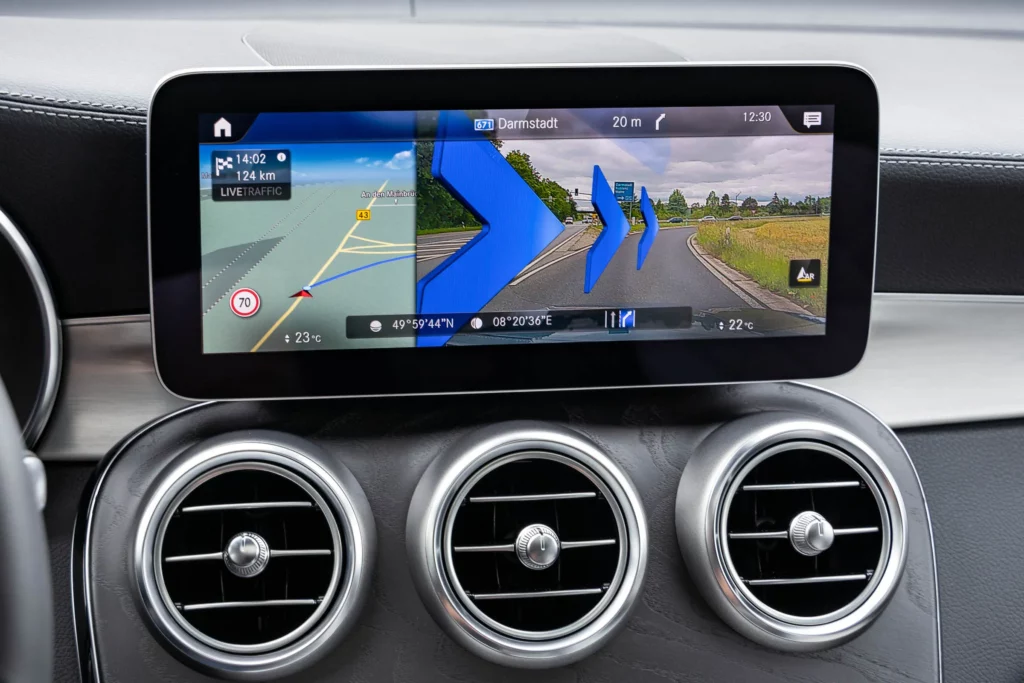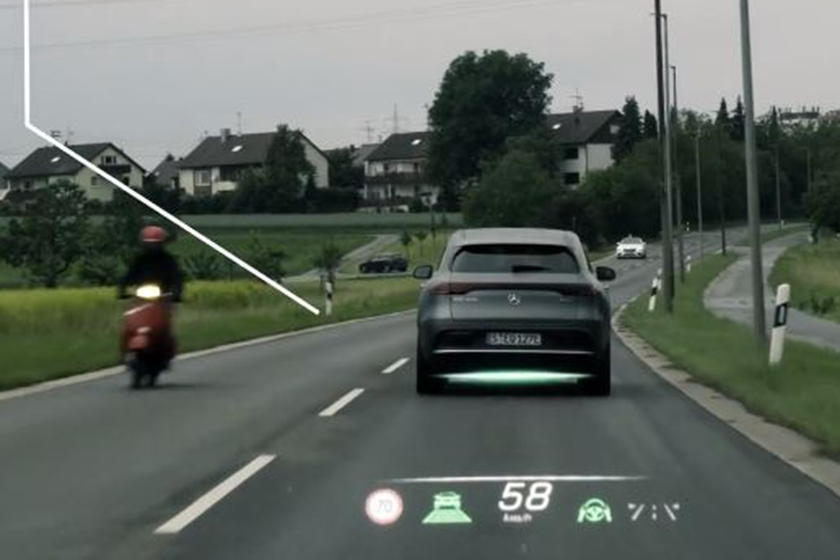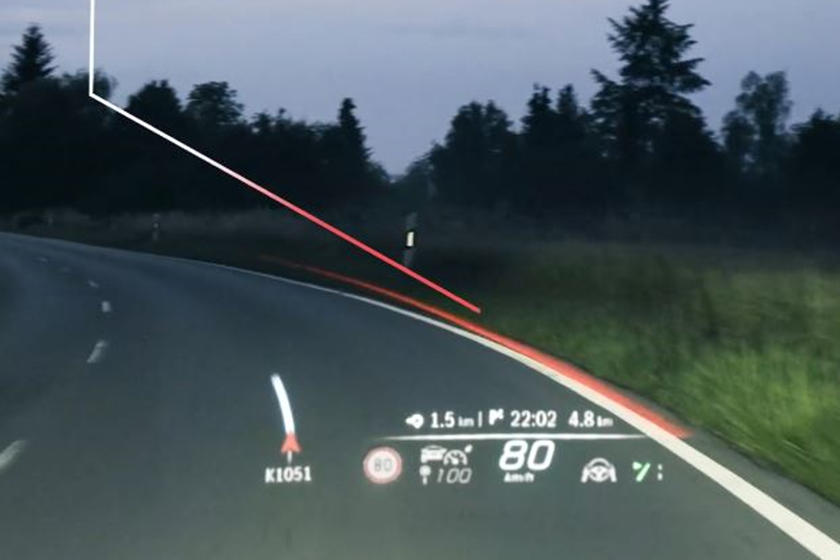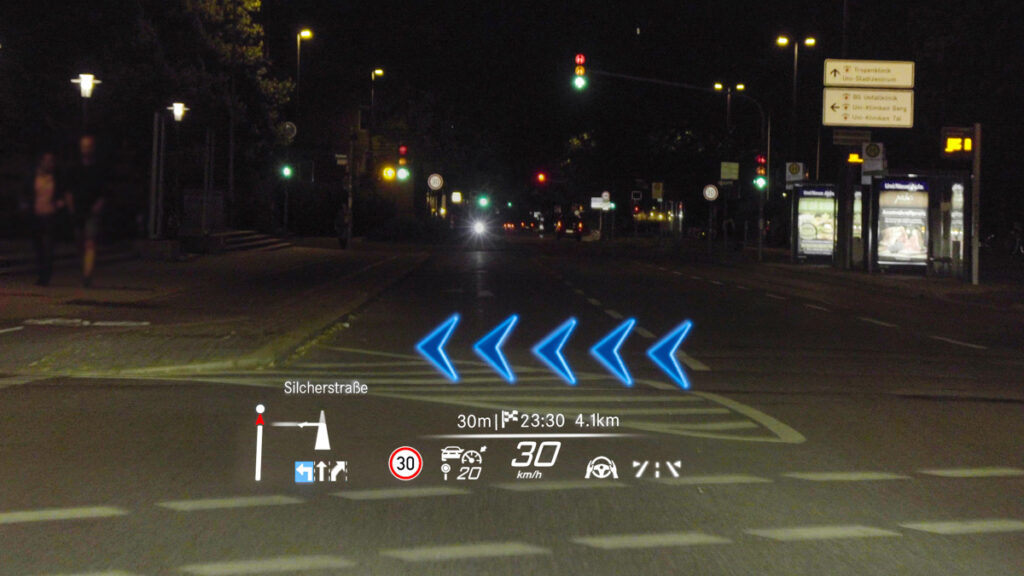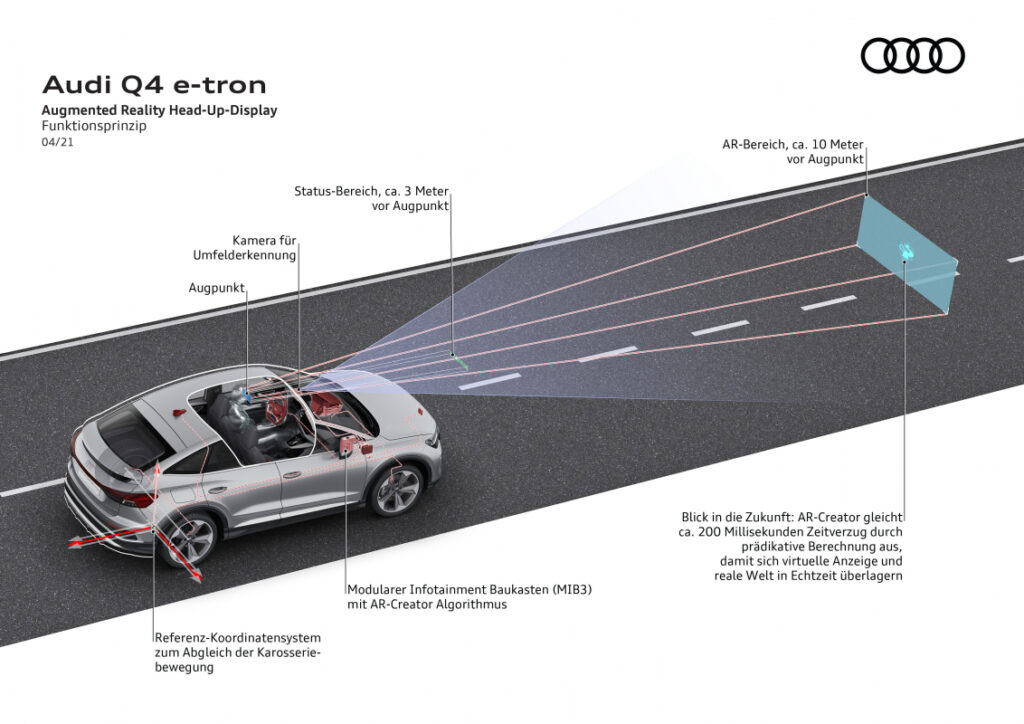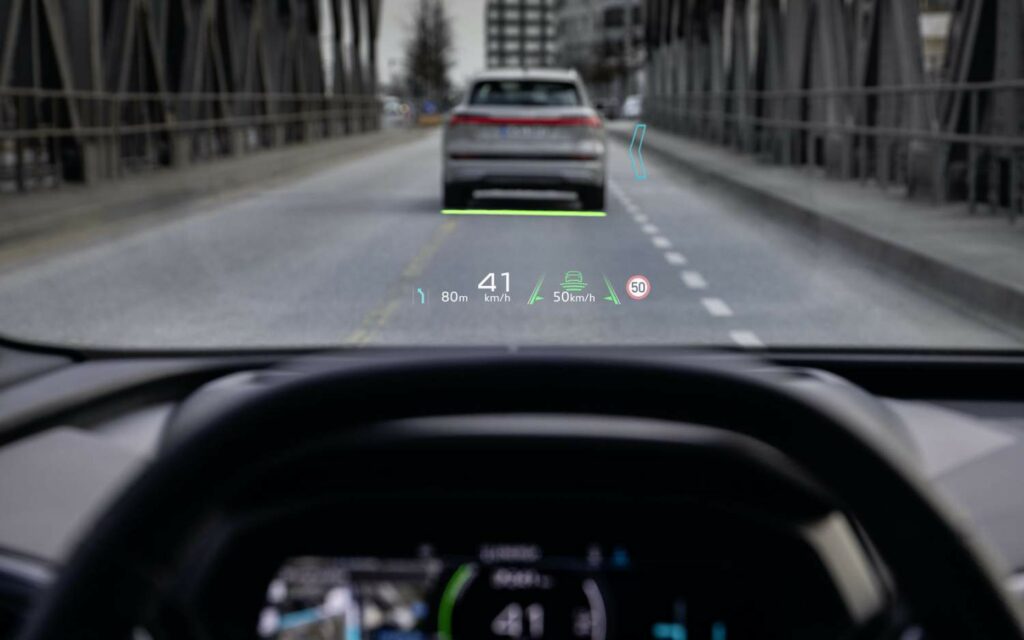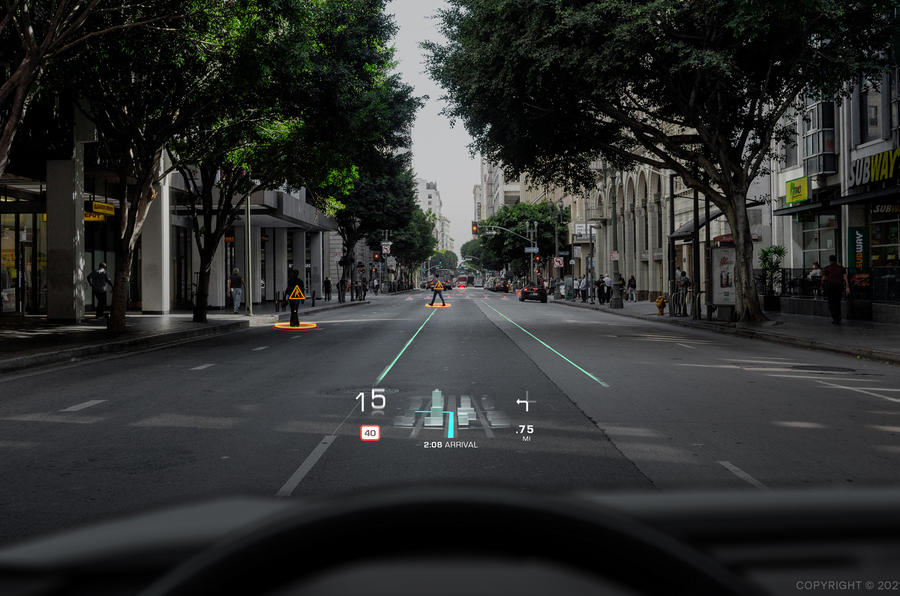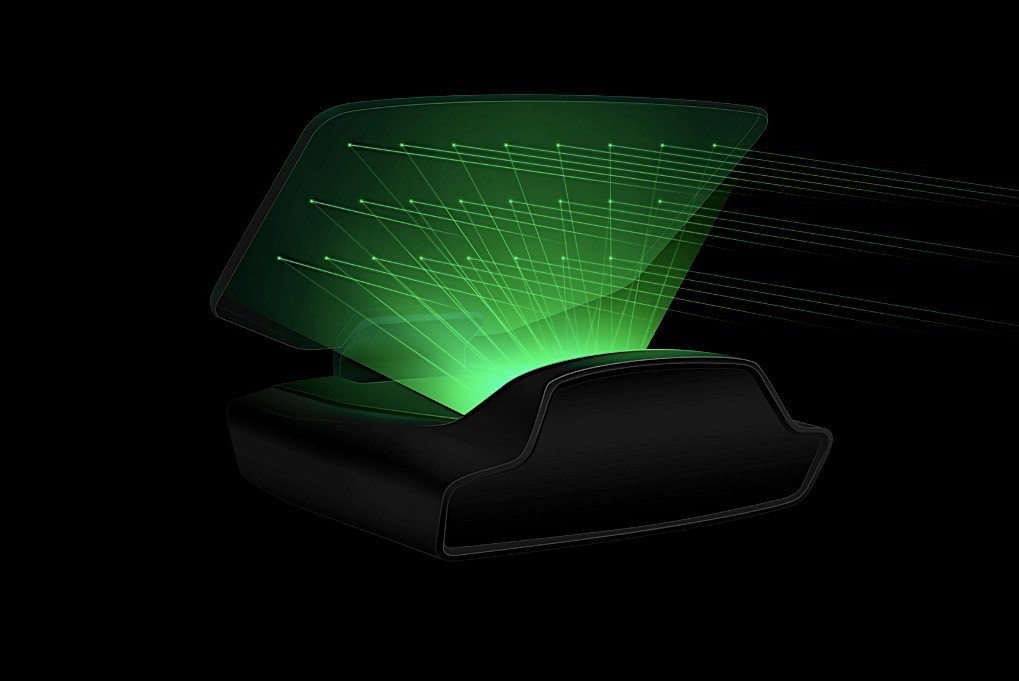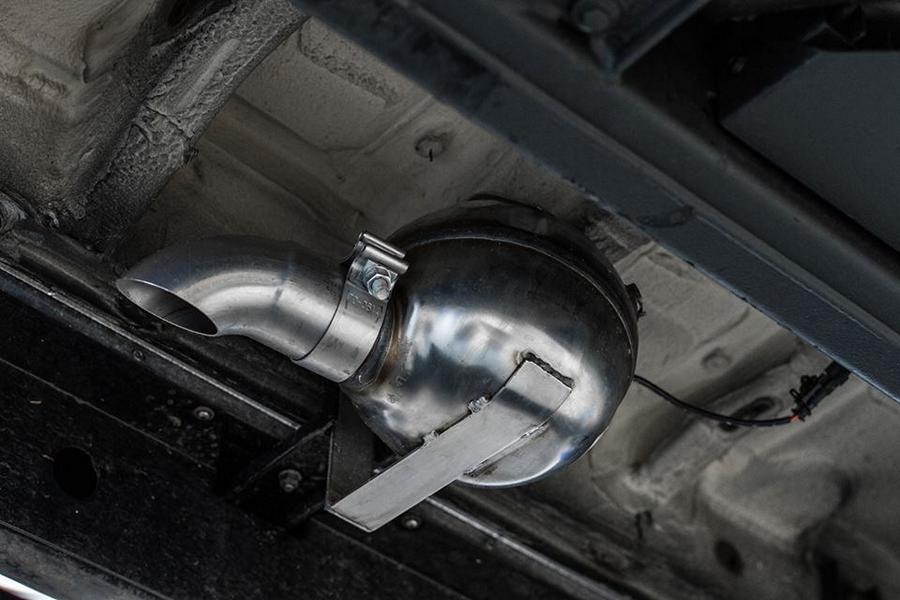| continuing my last blog entry on examples
In the past week I was searching for further examples of AR implementation in car’s user interafaces. Currently, after three weeks of research in this topic I have the impression that the industry is mainly focusing on visual augmentation as a help for the driver. Here are some further examples that offer some new aspects and features.
GMC Sierra HD trailer camera
The 2020 GMC Sierra HD pickup truck featured a novel implementation of AR technology. The truck was designed to tow heavy duty trailers and has in sum 15 cameras to help the driver navigate the really large truck. One camera can be mounted at the back end of the trailer looking at the road behind. This image can then be displayed added to the built-in rear camera view of the truck, letting the trailer almost disappear. [3]
I personally find the solution to be a nice gimmick but would actually question its practical benefit. The view for sure doesn’t help manoeuvring with the attached trailer.

Land Rover Clearsight ground view
Looking at special utility solutions, LandRover also implemented a camera augmentation in the Evoque and Defender models – on the main screen. The system works with cameras on the side mirrors and on the front grille and help the driver to see a 180° ground view in front of the car and between the front wheels, below the normal vision field. As LandRover targets off-road enthusiasts, this feature could be welcomed for showing any dangerous obstacles on rough terrains, or simply when climbing steep hills. A similar system is also implemented in the higher-class Bentley Bentaiga SUV. [7]
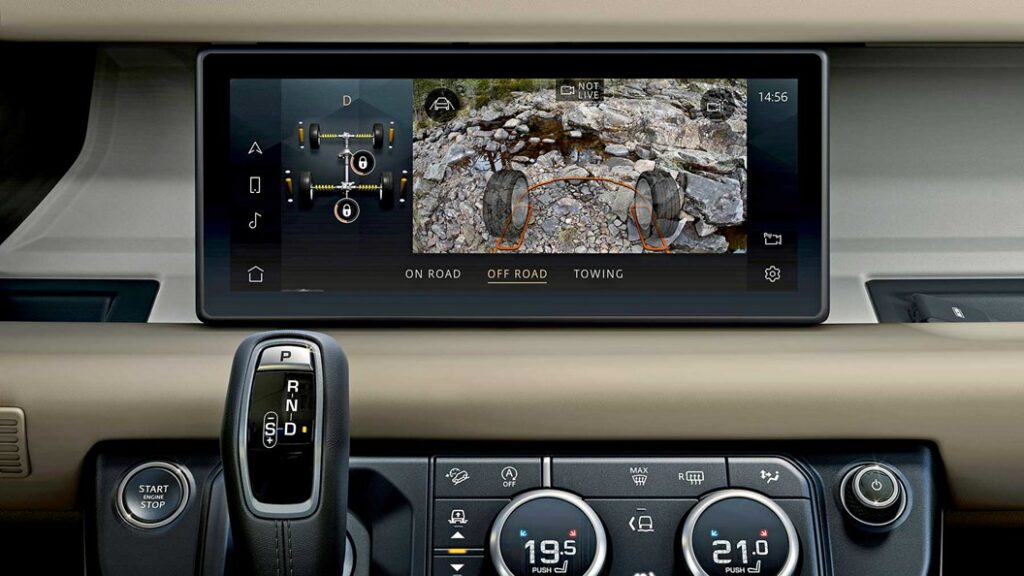
LandRover Clearsight [7] 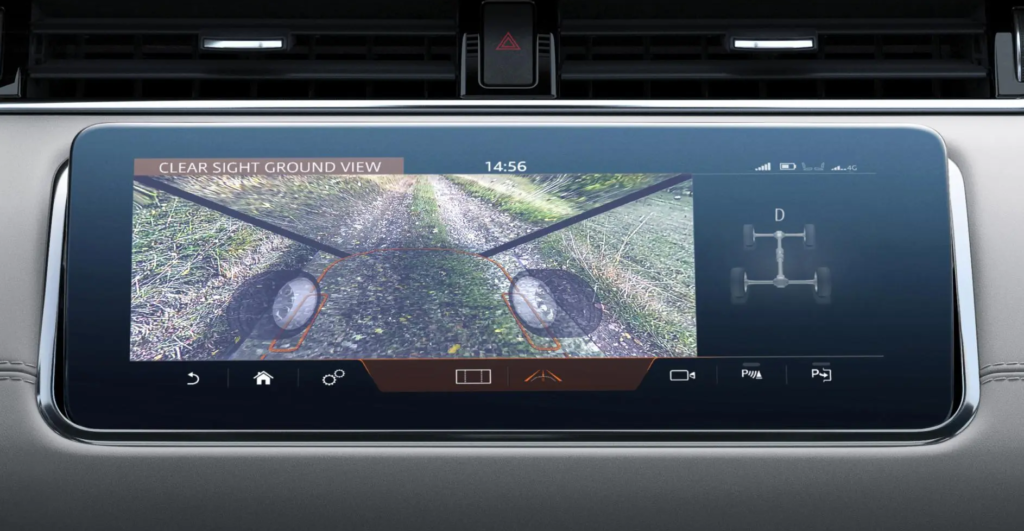
LandRover Clearsight [7]
Besides this “transparent bonnet” system, the company Jaguar-LandRover was also conducting research also on a “transparent pillar” solution. That should help drivers in a more urban environment to see their surroundings in 360°, including objects hidden by the roof’s pillars with the help of cameras and AR. The research was done in 2014 and I couldn’t find any further outcome of the idea. Additionally they have also shown a unique way of AR navigation help: a ghost car projected in front of the driver that has to be followed along the route. [8] [9]
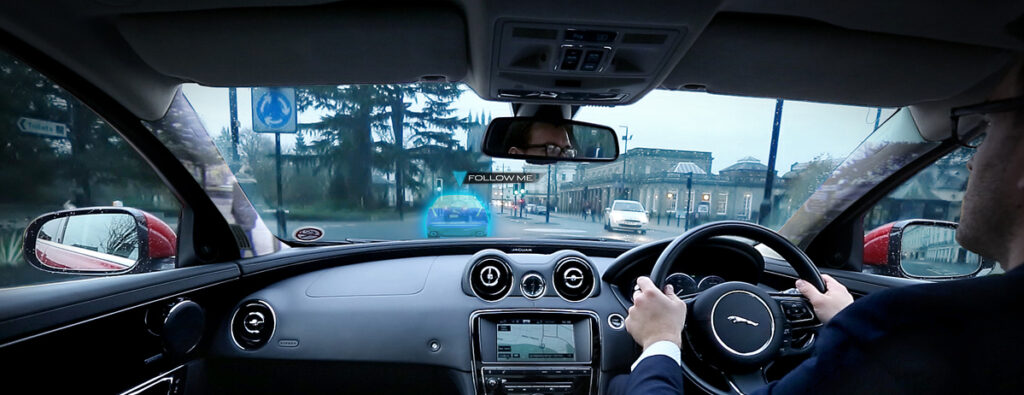
Panasonic’s state-of-the-art AR HUD
Panasonic Automotive is an other supplier (like Continental, etc.) who is developing onboard systems for automotive OEMs, like an AR Head Up Display with high-end features. Their product was shown on the latest CES 2021 exhibition and is claimed to get implemented in a series production car of an unknown brand in 2024. The system stands out from the other existing HUDs in following features:
- AI software for 3D navigation graphics, supporting smooth responses to sudden changes ahead of the car. It also uses information from all the onboard ADAS systems (e.g. a 180° forward facing radar with 90 m range) and generates updates in less then 0,3 seconds. (the spatial-AI, AR navigation platform is a patent by Phiar)
- Eye tracking technology to ensure that the driver always sees the projected information on the right place at any head movement.
- Vibration control: image stabilization for bumpy roads.
- Advanced optics, 4K resolution with laser and holography technology (by Envisics).
[5] [6]
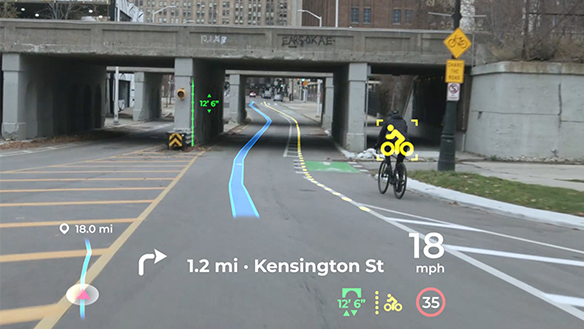
Panasonic AR HUD [5] 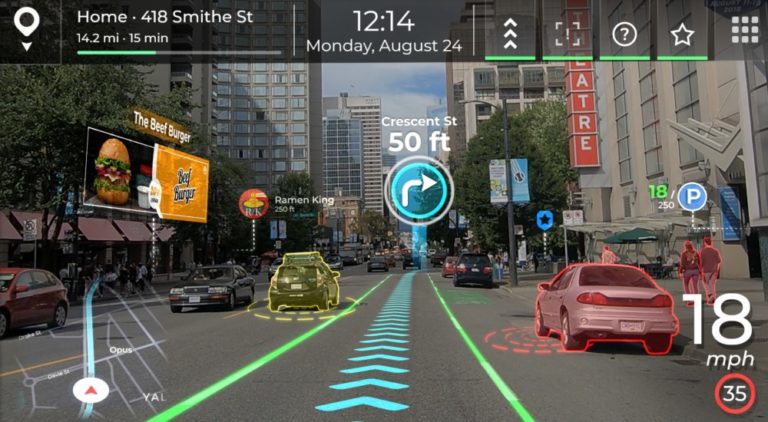
Panasonic & Phiar AR HUD [6]
To cover all relevant sensory fields in a car interior interface, next week I want to focus on the topic of haptics and tactile feedback solutions on the market.
Sources
[1] YouTube video from Roadshow: Car Tech 101: The best ways AR is being installed in cars | Cooley On Cars. Retrieved on 11.12.2021.
https://www.youtube.com/watch?v=PHhvCRexjWQ
[2] YouTube video from Roadshow: 2020 GMC Sierra HD: Heavy-duty hauler debuts “Transparent Trailer” tech. Retrieved on 11.12.2021.
https://www.youtube.com/watch?v=U0gZ9HaCWsA
[3] Online article by Road And Track: The 2020 GMC Sierra HD Can Make Your Trailer “Invisible”. Retrieved on 12.12.2021.
https://www.roadandtrack.com/new-cars/future-cars/a26009122/2020-gmc-sierra-heavy-duty-invisible-trailer/
[4] YouTube video by About Cars: Panasonic’s Innovative Augmented-Reality HUD Could Be in Cars by 2024. Retrieved on 12.12.2021.
https://www.youtube.com/watch?v=cLgMnSTSxog
[5] Online article by Panasonic: Panasonic Automotive Brings Expansive, Artificial Intelligence-Enhanced Situational Awareness to the Driver Experience with Augmented Reality Head-Up Display. Retrieved on 12.12.2021.
https://na.panasonic.com/us/news/panasonic-automotive-brings-expansive-artificial-intelligence-enhanced-situational-awareness-driver
[6] Online article by Auganix.org: Panasonic collaborates with Phiar to bring real-world AI-driven Augmented Reality navigation to its automotive solutions. Retrieved on 12.12.2021.
https://www.auganix.org/panasonic-collaborates-with-phiar-to-bring-real-world-ai-driven-augmented-reality-navigation-to-its-automotive-solutions/
[7] Online article by Car Magazine: Does it work? Land Rover’s ClearSight handy X-ray vision tech. Retrieved on 12.12.2021.
https://www.carmagazine.co.uk/car-news/tech/land-rover-clearsight/
[8] Online article by Autocar: Jaguar Land Rover previews transparent pillar technology. Retrieved on 12.12.2021.
https://www.autocar.co.uk/car-news/new-cars/jaguar-land-rover-previews-transparent-pillar-technology
[9] Online article by Jaguar: Jaguar Land Rover Develops Transparent Pillar And ‘Follow-Me’ Ghost Car Navigation Research. Retrieved on 12.12.2021.
https://media.jaguarlandrover.com/news/2014/12/jaguar-land-rover-develops-transparent-pillar-and-follow-me-ghost-car-navigation
